Posted on May 10, 2022
Updated on March 9, 2023
4 min read time

In today’s hyper connected world, when you can access virtually anything from the safety of your smartphone - the big problem facing marketers now is how to make the best use of all this data.
There’s simply so much information out there – from brand health intelligence to awareness tracking and sales conversion data.
Integrating all this data in one place, making sense of it, and finding useful ways to action it, is the quickest route to brand growth.
In this blog, we’ll show you how to do just that, outlining:
We’ll be using the ProQuo AI platform as an example throughout (a Brand Management platform which integrates consumers responses, brand health data and conversion metrics) to show you how brand intelligence works in action.
It can feel overwhelming in the beginning when you first start measuring your brand activities. There are so many different avenues available for marketers, as practically everything we do is measurable.
On social platforms, likes, follows and impressions can give you an idea of how your assets perform in real-time.
When it comes to email campaigns - opens, clicks, read time, and unsubscribes can show you how well people are engaging with your content.
For a promotional campaign, a good way of measuring success is through sales metrics, like profits, volume sold, the number of new customers buying your product or the number of returning customers choosing to buy your product again.
In addition to these metrics, there are also brand sentiment statistics – which show you how consumers feel about your brand. On ProQuo AI, we measure these feelings through the 16 Drivers framework – 16 different factors that have been neuroscientifically proven to determine the strength of a brand’s relationship with its consumers. These Drivers range from Familiarity – how well people feel they know your brand – to Innovation – how creative and forward-thinking people feel your brand is.
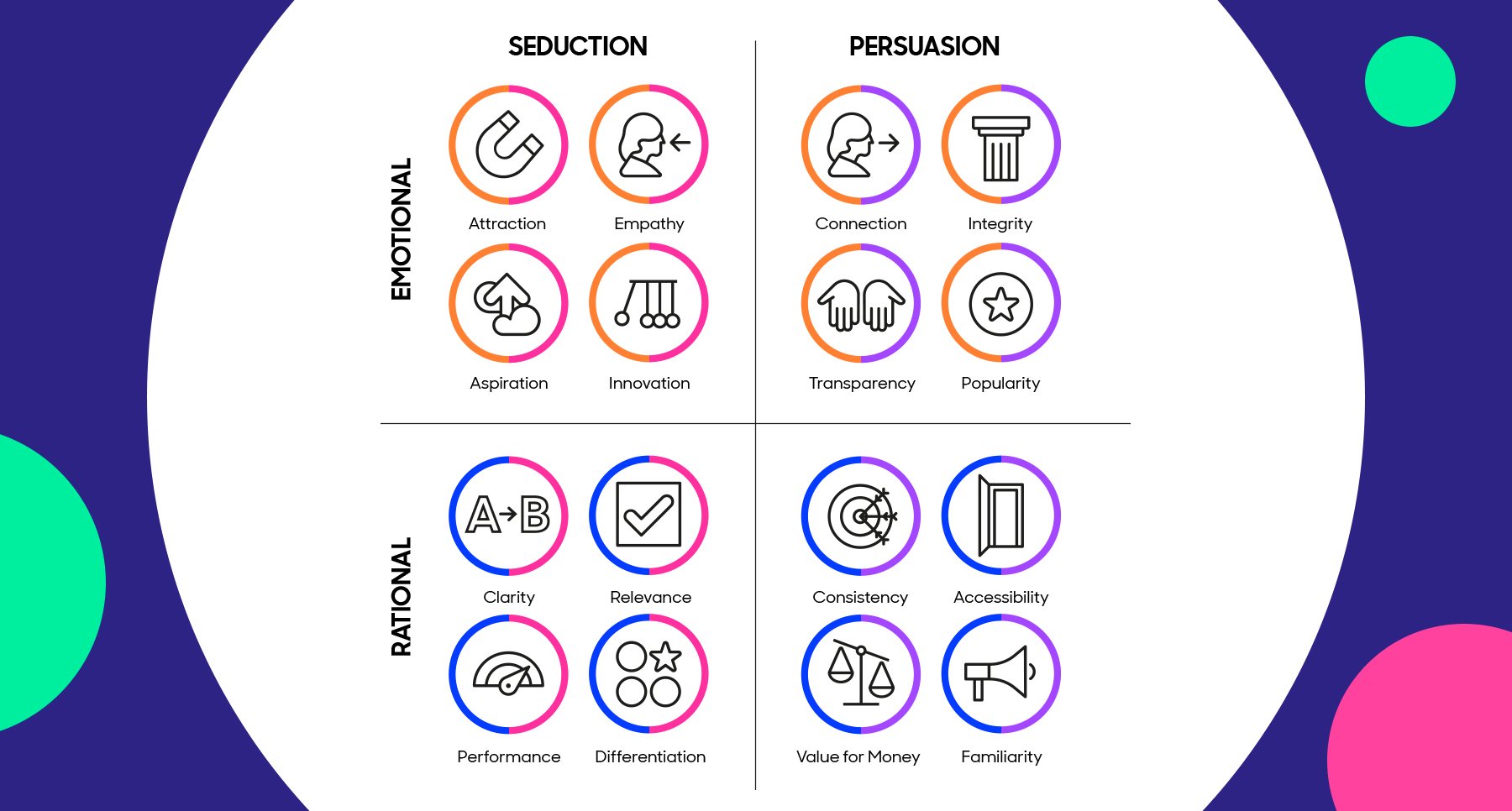
Every category has Drivers that consumers find most and least important. Identify these Drivers, focus your strategy on these areas, and you’ll find the feeling towards your brand will grow. And when these feelings grow, so too will your profits.
Here’s an example of how the mixer category is perceived by its consumers.
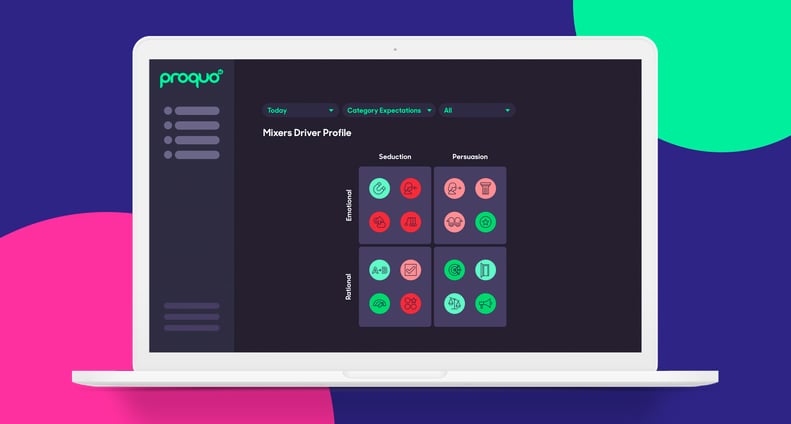
The darkest green indicates the most expected category needs (as judged by consumers) and the darkest red shows the largest opportunities for disruption (areas where consumers feel the category isn’t currently focusing on).
On the ProQuo AI platform you can measure:
This allows you to compare your own performance to your competitors and category, enabling you to make data-driven decisions to grow your brand.
But before you can do that, let’s first take a closer look at how to measure these areas.
Brand performance
You can understand how your brand is performing through the lens of the 16 Drivers of Relationships. These Drivers will give you an idea of where consumers feel your brand’s strengths lie and where there’s room for improvement.
On Fever-Tree’s profile, the brand scores highest in Popularity, showing consumers value the reputation of the brand. Consumers also seem to feel that they know a lot about the brand, as indicated by the presence of the Familiarity Driver. In addition to this, the high-quality taste of the products is called out (Performance), as well as the Consistent experience that people feel the brand delivers on.
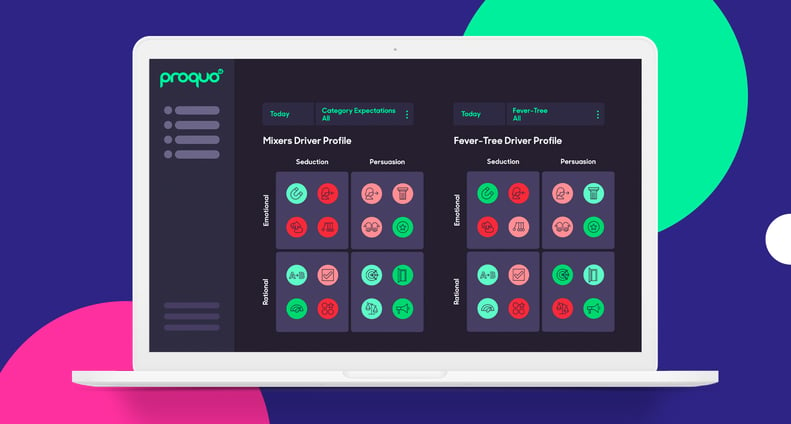
The Drivers that are least expected by consumers are Empathy, Differentiation, Innovation, and Aspiration. This shows how consumers don’t expect Fever-Tree to understand their wants and needs, aren’t expecting a unique or creative experience from the brand, and don’t believe the brand is particularly aspirational. Brands looking to compete against Fever-Tree should see these areas as the biggest opportunity spaces. New and emerging challenger brands should focus on these spaces to stand out against this competitor.
To see how these Driver Scores are changing over time, you can also view this chart as a time period – looking at month-by-month performance or over a period of 3 months, 6 months, a year, or more.
Clicking on specific Drivers will show you how impactful brand activations have been in changing brand sentiment.
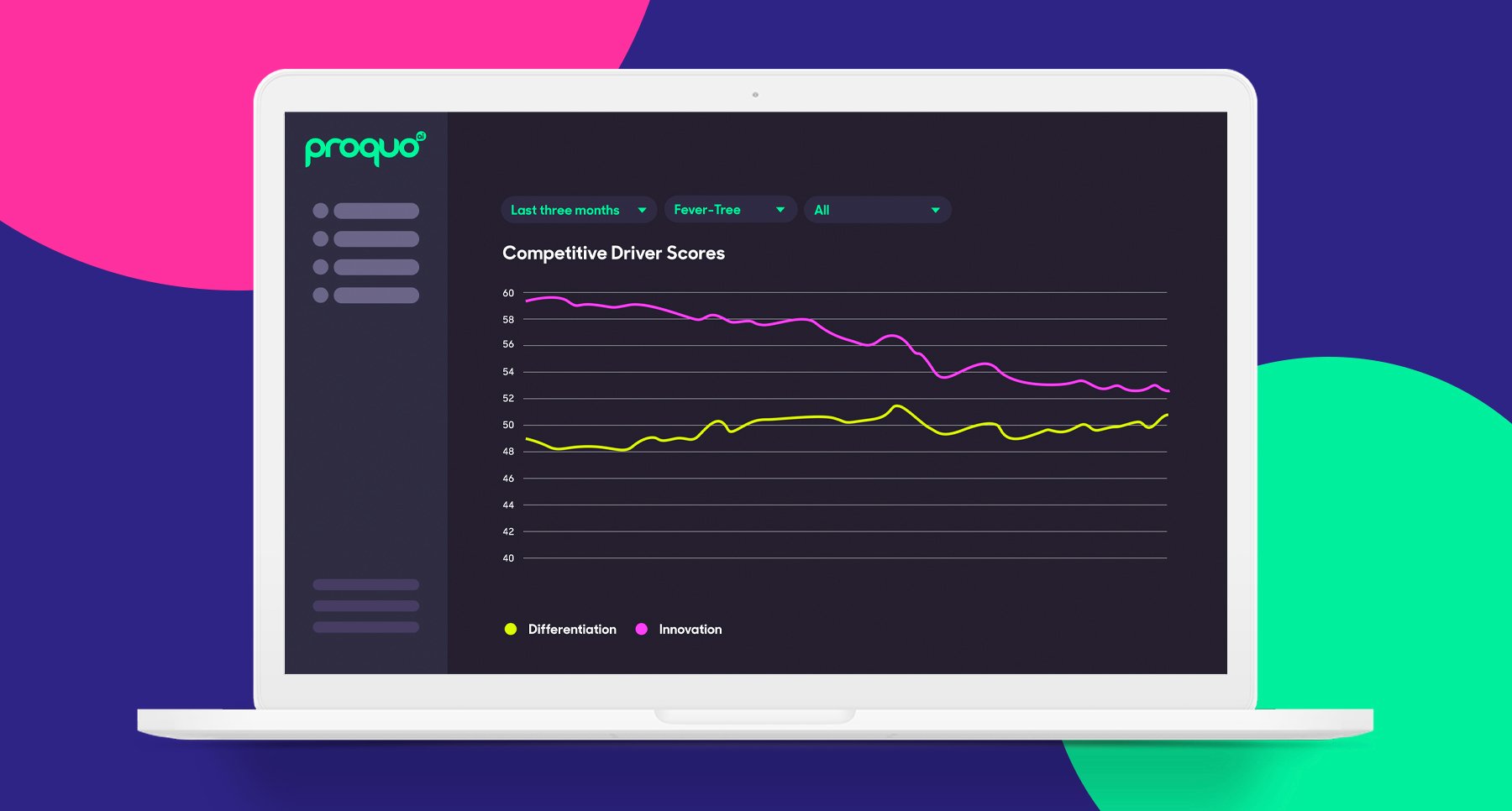
And if you want to dig deeper into your Driver scores, you can use the Conversations feature to understand the reasoning behind these scores. Here, consumers will explain the ‘why’ behind these choices.
You can search for positive or negative sentiment, on a brand, category or competitor level or by specific Drivers.
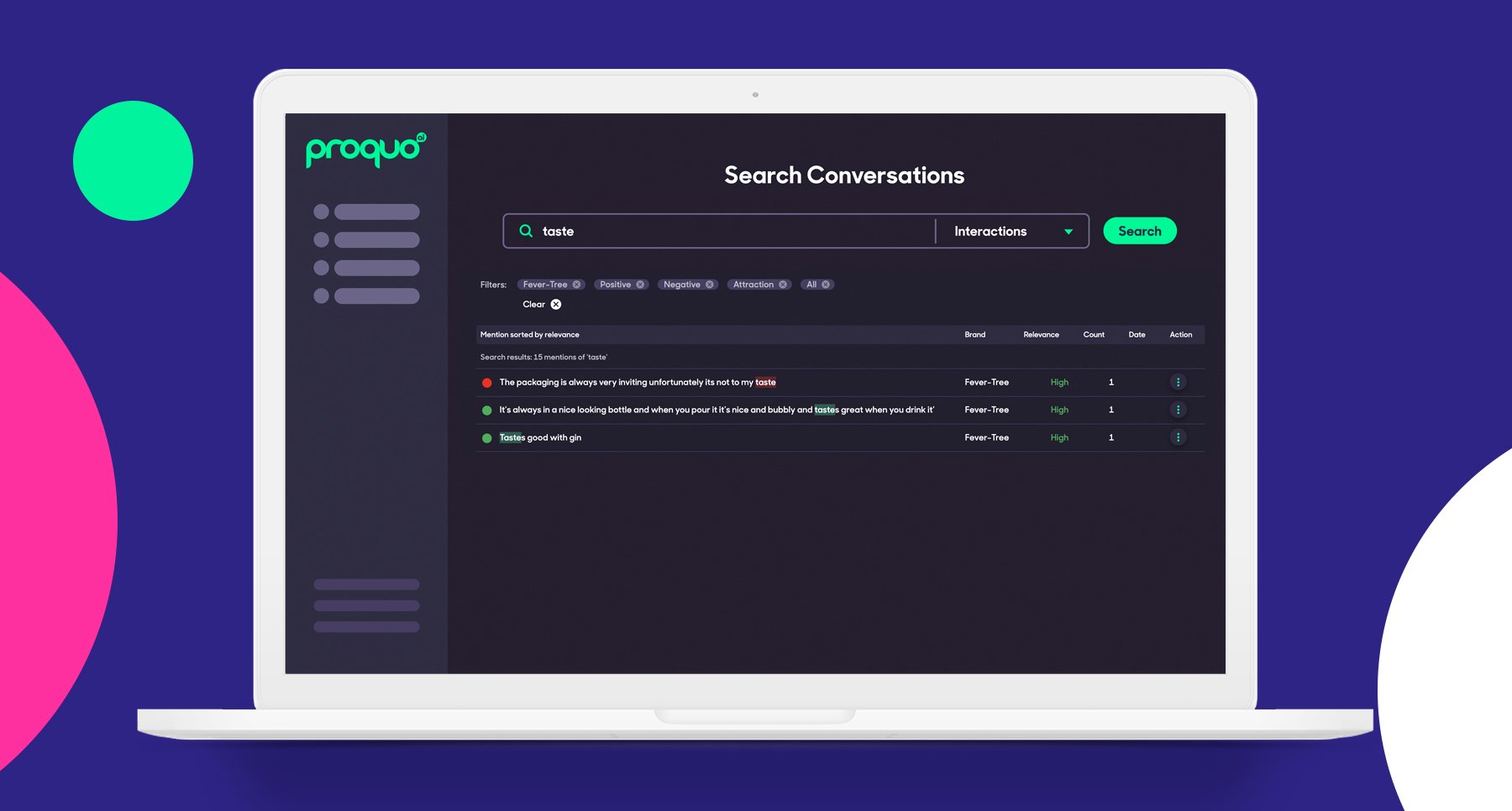
Category performance
To understand how a category is operating, you can use the 16 Driver screen as above (on an individual date basis or over a time period). You can also segment this data by Driver.
Or you can look at the Driver Profile of the category, either in isolation or by comparing this to specific brands to see how the market is perceived by consumers.
Competitor performance
Staying alert to your competitors’ movements will help to inform your own brand strategy, as you’ll be able to spot strengths, weaknesses, and gaps more easily.
On ProQuo, you can track your performance against your competitors, so you can draw direct comparisons. You can view this on an overall Driver level on a single date or again via a time period by choosing specific Drivers of focus.
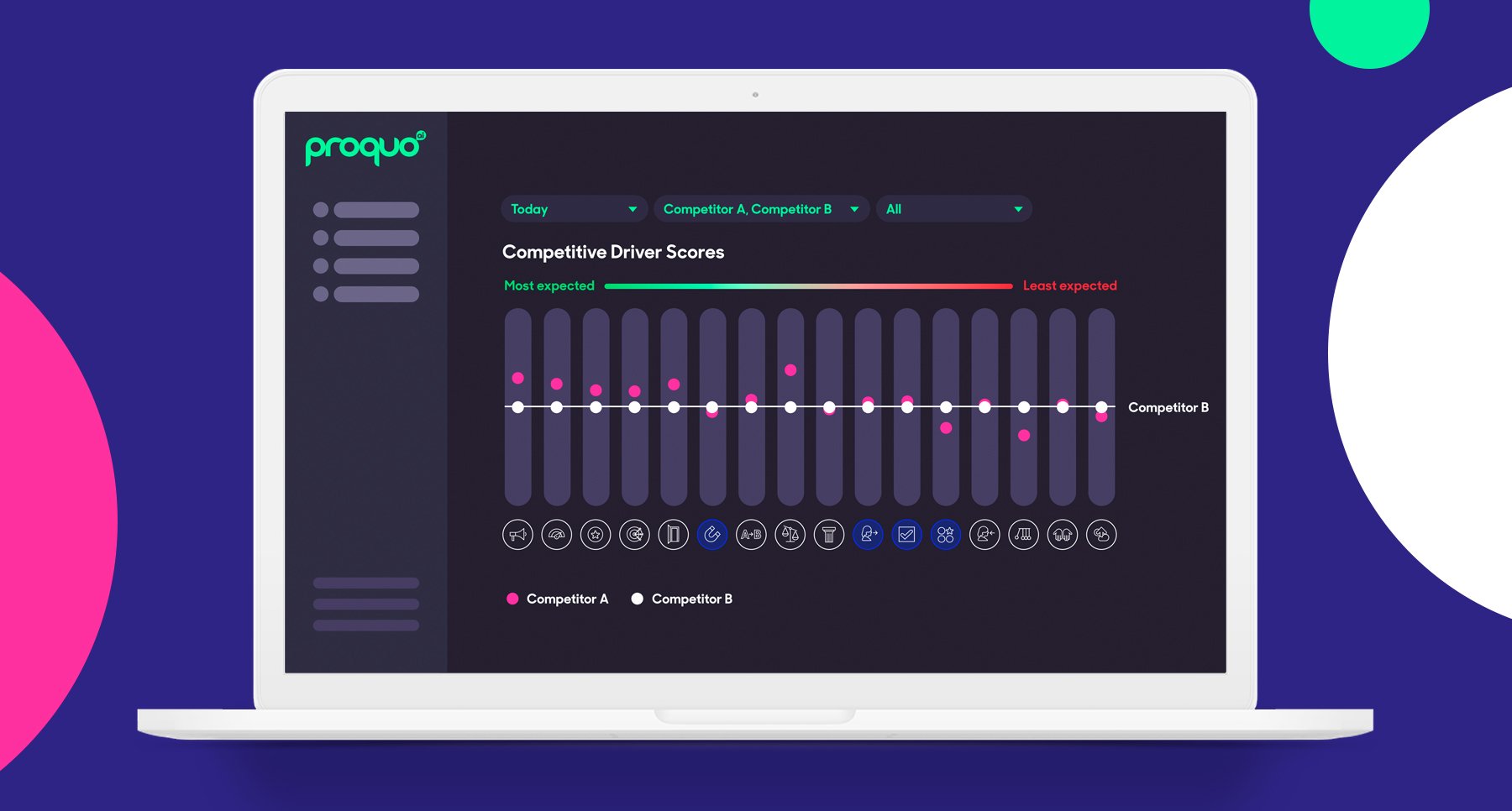
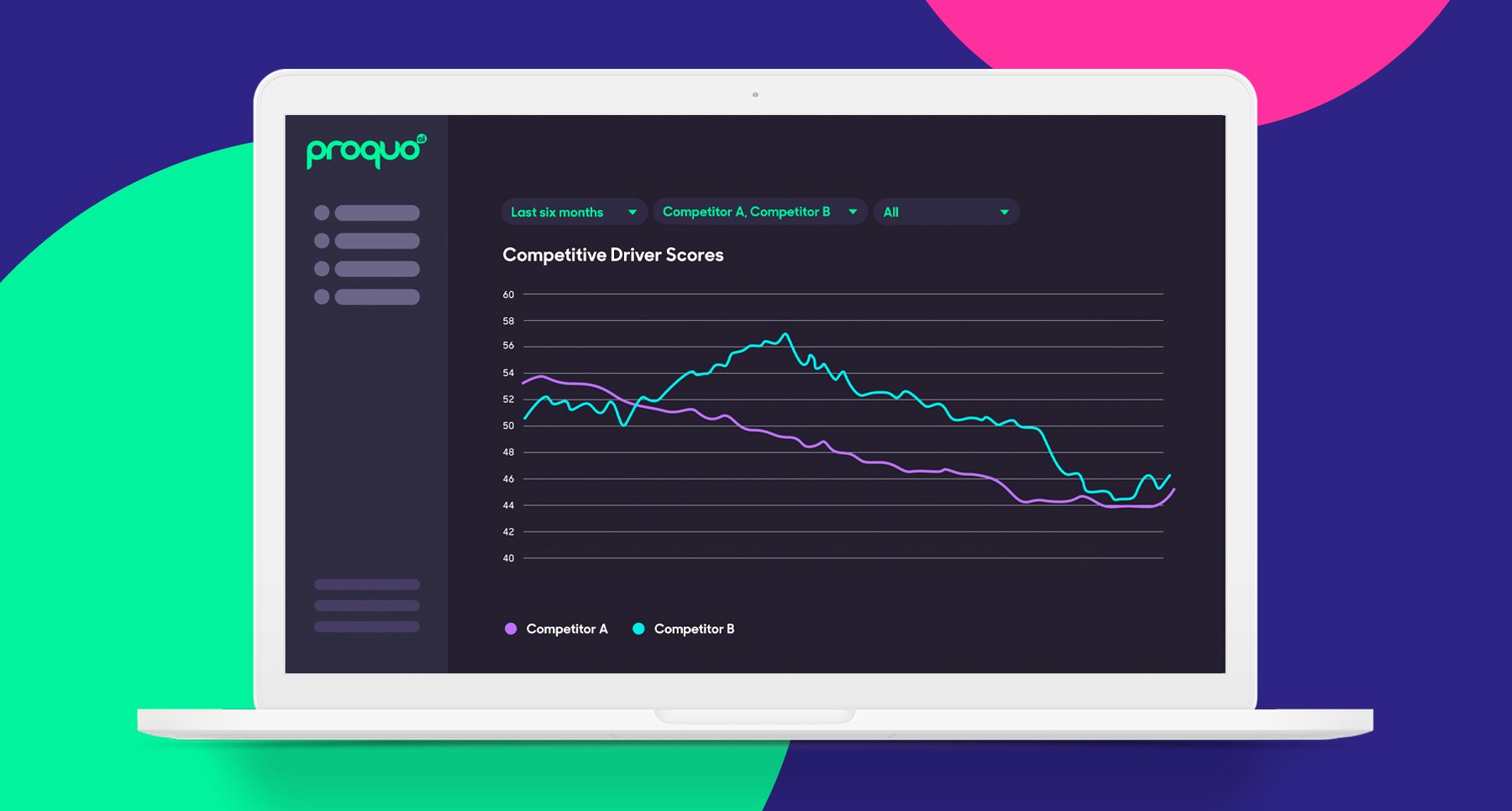
Step 3: How do I action these metrics?
Now you’ve got these metrics, here’s what to do with them to get the most value for your brand.
Decide on a goal
What are you trying to achieve?
Are you aiming to grow brand awareness, market share or disrupt the category?
Determine focus areas
Decide which four Drivers to focus your strategy around.
These could be determined, based on the performance of your category (which needs are most expected by consumers), where your competitors are over or underdelivering, or from the feedback you’ve received from consumers via custom questions.
Set KPIS
Set clear performance indicators against your goal and Drivers.
These should be:
An example of a KPI could be:
In order to achieve my goal of [growing brand awareness], I need to focus on [the Familiarity and Popularity Drivers]. To do so, I will set a KPI of [increasing Familiarity and Popularity by 3 points respectively to be achieved in 3 months time].
Report
To demonstrate the success of this strategy, you can also create automated reports via the ProQuo platform. These reports take your brand, competitor and category performance data, uncover the best story out of this dataset, and create a visual presentation to prove the value of your actions.
You can report on a variety of scenarios, from Driver performance to monthly progress reports, and more.
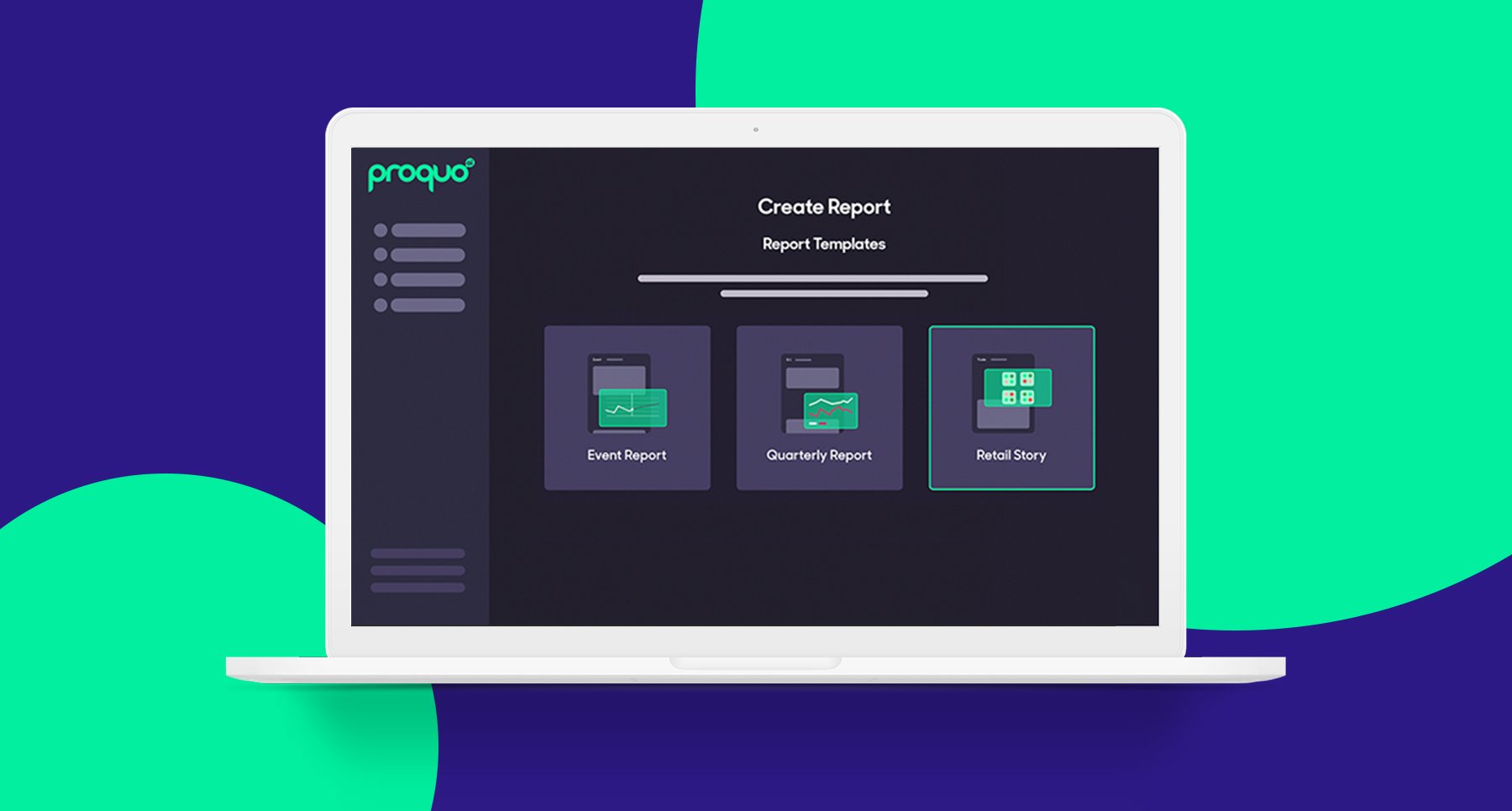
Take action
Now you know where to access data, how to measure this data, and what to do with it, your next and final step is to take action.
We’ve created customized guides - based on each of the 16 Drivers - to help you do just that. These will support you along the way, giving you advice on the best actions to take depending on the Driver strategy you decide on.
Our intelligent platform will take your brand further, faster.
Don’t believe us?
© 2020-2023 ProQuo AI International
All rights reservedWebsite by Blend